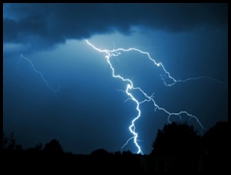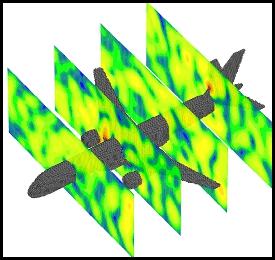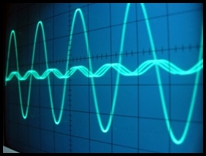Rod Perala, PhD
Rodney Perala, PhD is the president and owner of Electro Magnetic Applications, Inc, and has been with EMA for more than 30 years. He is an internationally recognized authority in electromagnetic effects and system electromagnetic modeling. He has devoted his career to the understanding the interaction of electromagnetic fields with civilian and military systems of many kinds, such as aircraft, missiles, the Space Shuttle, communication facilities, antennas, cables, and ground stations. He is a co-author of the book Lightning Protection of Aircraft (with F. A Fisher and J. A. Plumer of Lightning Technologies, Inc) and has published more than 350 articles, conference papers, refereed journal papers, and reports. In 1991, he (with some coauthors) won the NASA Langley H.J.E Reid Best Paper Award for New Methods and Results for Quantification of Lightning-Aircraft Electrodynamics, a result of several years’ research with the NASA/FAA F-106 thunderstorm research program.
Robert Fisher
Robert Fisher holds a B.S. and M.S. degrees in Physics and has worked in the engineering and technology development field for over 30 years.
He is not only a scientist and manager at EMA but also brings direct experience related to the development and commercialization of technology. He was the chief engineer and technology expert in the successful development, manufacture and sales of a carbon-dioxide based medical laser system (Tissue Technologies - Tru-Pulse laser). His responsibilities included all engineering development, testing and production for the laser system. He was instrumental in reaching FDA and ISO-9000 full certification in just four months. The product was taken from concept to production and sales in just seven months. The success of this development led to the acquisition of Tissue Technologies by Palomar Medical Lasers.
James R. Elliott, PhD
James Elliott has 25 years of experience in electromagnetic effects analysis and testing at Electro Magnetic Applications, Inc. He worked for 13 years on academic research in high-energy particle physics, seven of which he used electron and photon beams at Fermi National Accelerator Laboratory. He has experience simulating ESD, lightning, nuclear EMP and HIRF electromagnetic interactions on computers using finite-difference, method of moments, integral equation and SPICE circuit solvers. Dr. Elliott has evaluated CW and pulse EM shielding of enclosures by numerical modeling and measurement and developed methods, instrumentation and test protocols for measuring shielding effectiveness. He has modeled radiation transport to evaluate generation of source region EMP and direct photon drive of cables and measured responses at flash X-ray facilities in the U.S. and Germany. He developed and implemented methods for treating frequency dependence of composite material and lossy soils in time-domain computer codes. Dr. Elliott surveyed, evaluated and measured magnetic devices and materials suitable for HPM hardening for U.S. Army Research Laboratory.
Dr. Elliott is a NARTE Certified EMC Engineer
Gregory Rigden
Mr. Rigden joined the technical staff of EMA in June, 1985. Since that time, he has been involved in various endeavors involving numerical investigations, experimental/laboratory work, and the development of commercially available software products.
Numerical investigations pertain to the study of electromagnetic effects involving computer simulations of EM hazards (e.g. ESD, p-static, EMI/EMC, HIRF, lightning, NEMP, HPM) and the associated interaction with such complex structures as rockets, aircraft, shelters, ground vehicles, ships, antennas, equipment racks, equipment boxes, LRM’s, multilayered circuit boards, microchips, and individual electronic components. These studies have involved both linear and nonlinear phenomena as well as the incorporation of a variety of complex materials such as frequency dependent, magnetic, and full anisotropic substances.
Throughout these investigations Mr. Rigden has developed numerous numerical techniques and approaches. Many of these techniques have been combined into the user friendly commercially available software products called EMA3D and MHARNESS. Mr. Rigden is the principle developer of these software products. He has also developed numerous front end GUI tools to aid in preprocessing and problem definition. He has recently been involved in parallelizing the software product EMA3D.
Cody Weber
M.S. Physics - University of Colorado at Boulder, May 2007,
B.S. Engineering Physics and Mechanical Engineering, University of Colorado at Boulder, May 2005
Cody Weber is a scientist at Electro Magnetic Applications where he has developed and performed numerous numerical simulations involving electromagnetic interaction with carbon fiber materials. While at EMA, he has developed a strong foundation in electromagnetic simulations helping to create tools and techniques for improving user interaction with simulation software. He has also developed experimental techniques to determine the conductivity of carbon fiber panels as inputs to the numerical simulations. Previously, Cody worked on finite element method simulations of the mechanical properties of materials.
Jennifer Kitaygorsky, PhD
Jennifer Kitaygorsky attended the University of Colorado at Denver from 1998 to 2001, and received a Bachelor of Science degree in Physics in May of 2001. As an undergraduate, she was a recipient of the National Institute of Standards and Technology Professional Research Experience Program (PREP) Fellowship. She came to the University of Rochester for graduate study at the Department of Electrical and Computer Engineering in 2002. She received a Master of Science degree in 2005, and continued to pursue her doctoral study in nanostructured NbN superconducting single-photon detectors, and intrinsic properties of low-dimensional superconductors (nanostripes), under the supervision of Professor Roman Sobolewski. At the University of Rochester, Jennifer gained extensive experimental experience, and received a fellowship from the Civilian Research and Development Foundation (CRDF) Junior Scientist Program. She received her Ph.D. in August of 2008, and joined Electro Magnetic Applications soon thereafter. Dr. Kitaygorsky is a member of IEEE and American Physical Society.
Nathan Brilliant, PhD
Ph.D. Optical Sciences, University of New Mexico, 2001
M.S. Physics, University of Colorado, 1994
B.S. Physics, Harvey Mudd College, 1992
Dr. Brilliant has wide experience in academia, government, and industry. His work has spanned basic research in ultrafast phenomena to product development for the consumer electronics industry. He has contributed technically with laboratory experiments and numerical simulation and analysis. He provided technical direction for design for manufacturability and supply chain development. He has also managed programs and teams of scientists, engineers, technicians, and students.
Timothy J. McDonald, PhD
Timothy McDonald is a scientist at Electro Magnetic Applications where he has worked since 2007 to develop models of the interaction of aircraft and their avionics with electromagnetic environments.
Prior to joining EMA, Timothy worked with transparent conductors at the National Renewable Energy Lab and the National Institute of Standards and Technology as a PhD candidate and a postdoctoral fellow, respectively.
Timothy received the honor of distinction for his dissertation, which is awarded to the top 10 percent of all Columbia dissertations in a calendar year. He was offered a Research Associateship through the National Academy of Sciences. He received the Raman Touch Award in 2008 for making significant contributions to advancing the human condition through the use of Raman spectroscopy. His paper describing "wiring-up" of Hydrogenase with a carbon nanotube was listed in the American Chemical Society's "Five Firsts of 2007". He has authored or coauthored over fifteen papers since 2005.
Christel Amburgey
Christel Amburgey is a Scientist at Electro Magnetic Applications where she focuses on developing and analyzing models of the interaction of aerospace vehicles with electromagnetic environments. Amburgey's main interest is computational electromagnetics in the time domain (Finite Difference Time Domain), although she also possesses materials measurement experience and practical project management experience. She has experience in the measurement and modeling of carbon fiber and other advanced composites.
Prior to joining EMA, Amburgey worked at the Military Survivability group at Bell Helicopter Textron. While at Bell she worked to implement blast fragment resistant transparent canopies on the AH-1 helicopters. She also made significant contributions to the Electronic Warfare system on the V-22. She is familiar with canopy design and several of the potential platforms which nanotube applications could be applied. Her experience in a functional research group at a large company has allowed her to facilitate in the implementation of research projects into a functional platform.
Amburgey received her B.S. in Electrical Engineering at Arizona State University with an emphasis in Electro Magnetics. She attended the University on a National Merit Scholarship and received the Award for Outstanding Senior in her graduating class. She received her Masters of Science at Arizona State in Computation Electromagnetics while working as a research assistant in the Material Wave Interaction Lab. Her graduate work was a mix of material measurement experience and computational modeling. Her thesis, "Free Space Propagation and Reconstruction Using Plane Wave Spectrum", discussed spectral methods for improving the computational efficiency of FDTD.


